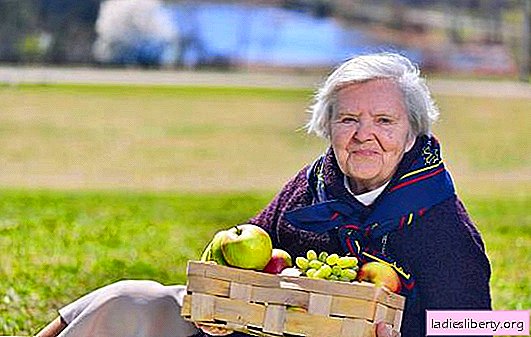
You may have already been told that fruits should not be eaten by diabetics in any case. Surely you heard that watermelons and bananas are generally forbidden to eat, because they are too sweet. Neither opinion is correct. Fruits with diabetes can be eaten, only this must be done wisely.
Fruit and Diabetes
Fruits are very healthy. They are also useful for diabetics, if consumed in moderation. The thing is that you need the right products and in certain proportions.
Fruits contain fiber, which helps prevent blood sugar spikes, cleanse coronary vessels from cholesterol and eat more quickly. They are also an excellent source of vitamins and minerals such as potassium, which can help lower blood pressure.
However, fruits are carbohydrates and contain a natural sugar called fructose. Carbohydrates, whether from bread, milk, yogurt, potatoes or fruits, are converted into sugar or glucose in the body. For this reason, it is recommended that people with diabetes control the amount of carbohydrates they eat, including fruits.
Here are some helpful tips:
1. Avoid dried fruits and fruit juices
Dried fruits, especially candied fruits, contain much more sugar than fresh fruits. Sugar is also more because it is added to flavorings, and if the peel of the fruit is removed, then there is practically no fiber in it.
As for juices, even one hundred percent fruit juice instantly raises blood sugar, since the fiber contained in the fruit is removed during the preparation of the juice. There is always a danger of drinking more juice than necessary, and these are extra calories.
Instead of dried fruits and juice, choose fresh fruits, frozen or canned, but without added sugar.
2. Watch the serving size
If you adhere to a fixed plan for carbohydrate intake, you need to consider that fruits also contain them. At one time, you need to eat no more than one portion of fruit, and for the whole day - no more than two or three.
One serving of fruit contains 15 g of carbohydrates. What is one serving? It depends on the size and type of fruit. For example, one serving is:
- 1 small piece (120 g) of apple, orange, peach, pear or plum.
- 1 medium-sized banana.
- 2 small or 1 large mandarin.
- 2 small kiwis.
- 4 small apricots.
- About 1 cup of melon or watermelon pulp.
- 15 grapes or cherries.
- 1/3 of the medium-sized mango.
- 11/4 cup strawberries.
- glasses of blueberries.
- 1 cup raspberries or blackberries.
There are fruits that diabetics should eat with caution. These are bananas, cherries, grapes, mangoes and pineapple. They need to be eaten quite a bit, since they sharply increase sugar.
It is better to choose fruits rich in fiber. These are mainly berries.
3. Choose fruits with a low glycemic index
The glycemic index shows how carbohydrate-containing foods increase blood glucose. Foods with high glycemic index sharply increase sugar, and with low - not much.
Most fruits have a low glycemic index, with the exception of melon and pineapple. This does not mean that you should not eat melon or pineapple at all, but if you notice sharp surges in sugar after eating them, it is better to really avoid them.
In general, diabetics should not be too lazy to check the sugar level after eating certain fruits to find out which ones they can eat and which ones not.
4. Eat fruit with protein
Some people notice that if you combine fruit with protein, sugar rises more slowly. And indeed it is. Fruits can be combined with low-fat Greek yogurt, low-fat cottage cheese or almond oil.
Do not believe that diabetics are forbidden to eat fruit. However, one must take into account the content of carbohydrates in fruits, which are converted to sugar and can cause a sharp rise in glucose. Keep track of the number of servings and eat a little bit of fruit. If you have any questions about eating fruits, you should contact your doctor.











